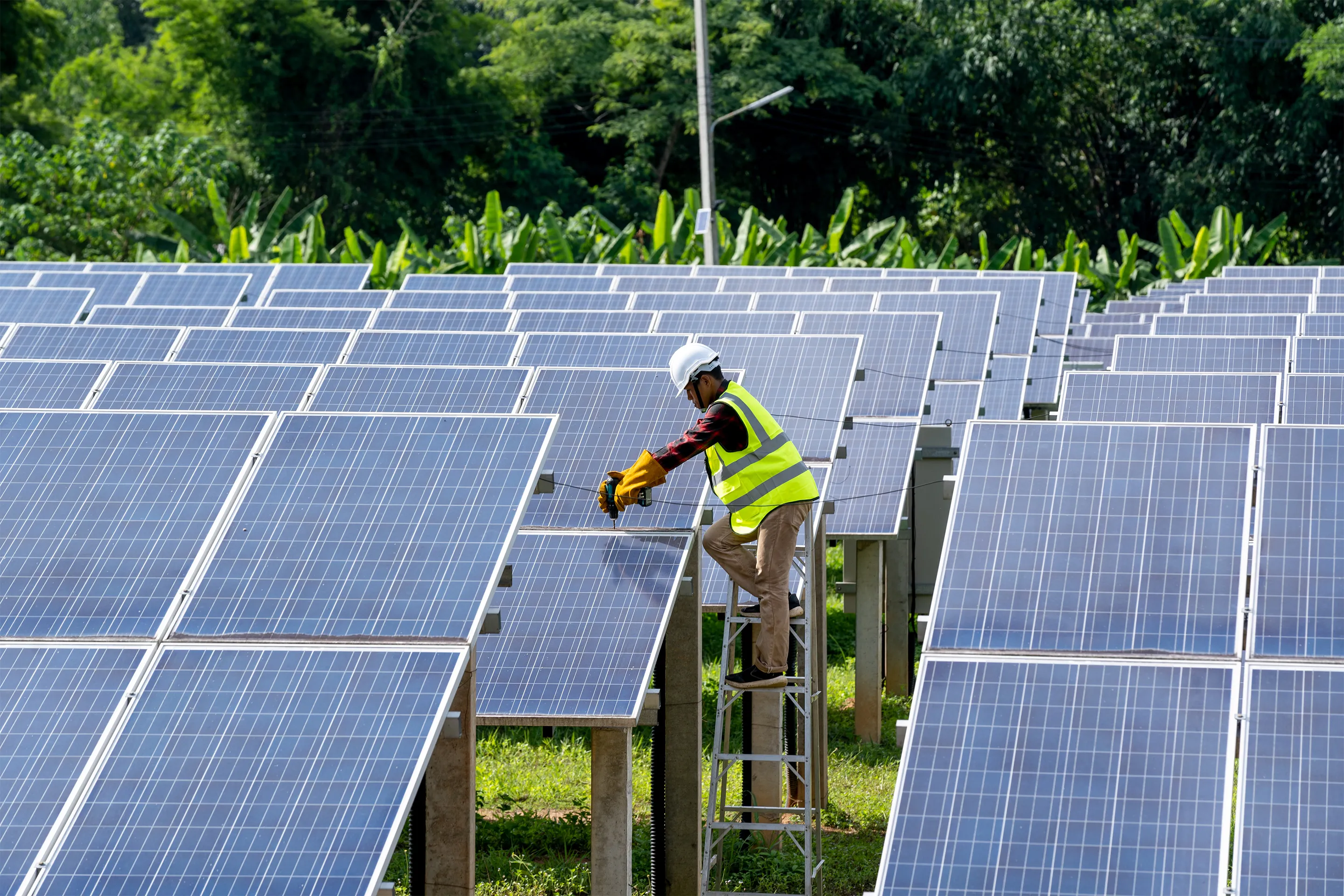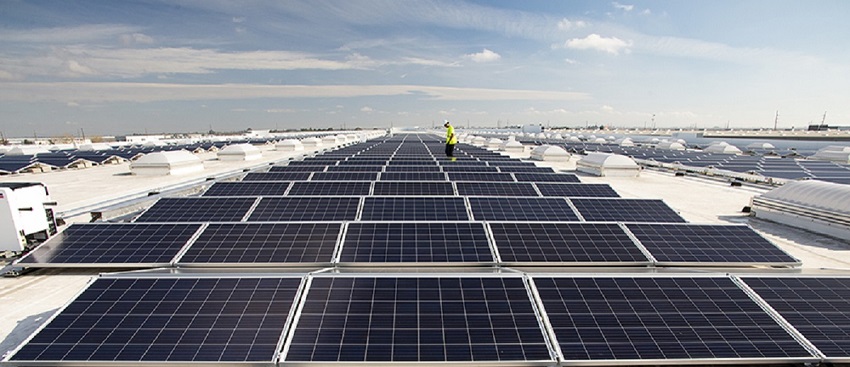The 7-Minute Rule for Solar Panel Installation Pennsylvania
The 7-Minute Rule for Solar Panel Installation Pennsylvania
Blog Article
Energy Efficient Installations PA: Our Firm Focuses On The Setup And Management Of Photovoltaic Energy Systems
History and Advancement of Photovoltaic Panel Companies
The creation of solar panel companies can be traced back to the 1800s when Alexandre Edmond Becquerel discovered the photovoltaic impact. Would he have pictured how his discovery would revolutionize the way we harness energy?
Early Beginnings

In 1954, Bell Labs established the very first useful photovoltaic cell. This marked a significant turning point in the history of solar energy. They were initially used to power area satellites, but who understood this was just the start?
Development and Development
- In the 1970s, an energy crisis resulted in increased interest in renewable energy sources, including solar energy.
- By the 1990s, advancements in technology and increasing environmental awareness caused the development of solar panel companies internationally.
A New Age
As we got in the 21st century, the solar market witnessed a rapid development. The demand for tidy and renewable energy caused a brand-new era in the solar panel industry.
Interesting Realities
- The world's very first solar power station was integrated in 1982 in Hisperia, California.
- By 2019, solar power had ended up being the world's fastest-growing source of power.
The journey of solar panel companies has been exceptional, hasn't it? The future holds immense potential, with constant advancements leading the way for a sustainable future. Can we visualize a world powered completely by solar energy?
Progressing
Today, solar panel business continue to innovate, pursuing more efficient and cost-efficient options. The development of solar power has come a long method, and yet, the journey has simply started.
The Core of Photovoltaic Panel Production
Ever question what enters into producing those shiny, sun-loving solar panels? The procedure is as excellent as the end product (Solar Panel Company). High-purity silicon, the primary ingredient in photovoltaic panels, undergoes numerous improvements to ensure its efficiency and toughness
From Sand to Silicon
Crystalline click here silicon, the foundation of a lot of photovoltaic panels, stems from basic sand. It's a remarkable journey, isn't it? The sand undergoes a high-temperature response with carbon to form silicon. However, this isn't just any silicon. The silicon used in photovoltaic panels is "solar-grade," with a purity of 99.9999%. It's this pureness that allows the panels to successfully transform sunlight into power.
Ingot Development
When the silicon is pure enough, it's time to form ingots. Image a large, cylindrical block of strong silicon. How is this attained? Through a procedure called Czochralski process, where the silicon is melted and after that slowly recrystallized. It's a sluggish dance of science, leading to a strong item that is practically as pure as the raw silicon itself.
Slicing into Wafers
The ingots are then sliced into wafer-thin pieces, like slicing a loaf of bread. Each piece is a potential solar cell, waiting to harness the power of the sun. Did you know that the silicon wafers are just about 200 micrometers thick? That's about half the thickness of a human hair! The process requires precision and patience, however the result is a set of wafers ready to be turned into solar cells.
Developing Solar Cells
With the wafer ready, it's time for the magic to occur. The silicon wafer is 'doped' with other components like phosphorous and boron to create an internal electrical field. It's this field that allows the conversion of sunlight into electrical power. Complex, isn't it?
Assembly and Quality Assurance
Solar battery resemble puzzle pieces that come together to form a solar panel. The cells are soldered together in a grid-like pattern, then covered with a protective layer of glass. The final action involves strenuous quality control checks. After all, it's vital that every solar panel carries out at its peak, would not you concur?
Expert Tip
Constantly remember that even the most efficiently made solar panel can lose efficiency due to dirt and particles accumulation. Routine cleansing can substantially enhance your panels' performance.
Comprehending the Ecological Impact of Photovoltaic Panel Companies
Ever contemplated the ecological footprint of a solar panel company? Green innovation, such as solar, has transformed our energy landscape, but what about the behind-the-scenes impact?
The Production Process: A Double-Edged Sword
The manufacturing process for solar panels requires a significant amount of energy. This process, called 'em bodied energy', can be viewed as a type of 'energy financial obligation'. It's a little like obtaining today's sunlight to power tomorrow's energy needs. But worry not, the energy repayment time is frequently much shorter than you 'd believe!
- The energy repayment period for photovoltaic panels is generally 1-4 years.
- After this duration, the energy produced is essentially carbon-free.

Life After Decommission
And what happens when a photovoltaic panel reaches completion of its lifespan? Can it just be tossed into the garbage? No, that wouldn't be really green, now, would it?
A viable service is recycling. While photovoltaic panel recycling is still in its infancy, it holds a world of potential. Recycling not only keeps materials out of garbage dumps but also minimizes the need for brand-new basic materials.
Accountable Sourcing: More Than A Buzzword
Where does the silicon originated from, you ask? Regrettably, the industry's need for silicon and unusual minerals can result in harmful mining practices. Responsible sourcing is therefore vital to lower harmful environmental effects.
Decreased Carbon Emissions: The Bigger Picture
Let's not forget the larger image: solar energy significantly lowers carbon emissions. Once set up, solar panels produce clean, renewable energy, offsetting their initial manufacturing footprint.
In other copyright, the ecological effect of photovoltaic panel companies is a complex issue. However, with accountable practices, the promise of a cleaner, greener future is well within our grasp.

Financial Efficiency and Market Share of Photovoltaic Panel Companies
Ever questioned why some solar panel business - Affordable Solar Panels PA outshine others in the market? What sets them apart? The key depend on their monetary performance and market share
Financial Performance: A Vital Indicator
Financial performance plays a pivotal function in the success of any organization. For photovoltaic panel business, it's no various. Strong financial efficiency allows these business to purchase cutting-edge technology, research study, and development, therefore creating high-quality, effective solar panels.
How do they accomplish this? With a concentrate on cost efficiency and tactical financial investments. Companies that manage to lower production costs without compromising on quality tend to fare much better in the market.
Market Share: A Step of Success
Market share, on the other hand, is a direct reflection of a business's appeal among customers. A high market share means more house owners are choosing their photovoltaic panels over rivals.
So, what's the secret dish for gaining a larger market share? It boils down to client complete satisfaction and brand reputation. Business that focus on customer needs and maintain a favorable brand name image are more most likely to catch a bigger share of the market.
- Customer Complete satisfaction: Photovoltaic panel business that deliver reliable items and extraordinary customer care tend to have greater consumer satisfaction rates.
- Brand name Credibility: A strong brand credibility is developed in time through consistent delivery of quality product or services.
Financial Efficiency and Market Share: The Symbiotic Relationship
Interestingly, the relationship between monetary efficiency and market share is not one-sided. They feed off each other. A strong financial performance can increase a business's market share, while a high market share can enhance monetary efficiency.
As a photovoltaic panel company, stabilizing these 2 aspects is vital for long-lasting success. A company that overlooks either of them might find it challenging to preserve its position in the competitive solar industry.
The Takeaway
So, what does all this mean for you? Whether you're a house owner aiming to set up solar panels or an investor eyeing the solar industry, comprehending the monetary efficiency and market share of photovoltaic panel business is essential. They are essential indications of a business's health and capacity for future development.
Report this page